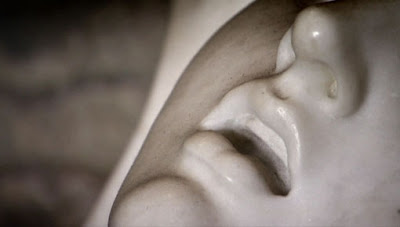I missed posting yesterday due to work. After a full day of meetings, we went on a bus tour of the city and then dinner and bar hopping. I got to bed at 2:30 and had to get up at 7am for meetings. Yesterday was a bust for exploring and seeing things on my own.
Today was a new day. After my morning meetings, I slept off my night of multiple over indulgences and headed out to the Trastevere area. It is across the Tiber river and is not the posh, idyllic beauty of the Centro Storico. It is grittier, dirtier, and has graffiti on the walls. It has tight, dark walkways that spill out into beautiful small plazas. The people are not the wealthy, but they have a bohemian grit that drives the pulse of the area. I found many small art galleries, book stores and great little eateries. All of this was accompanied by the soft tap, tap, tap percussion of the rain on my umbrella. At times I felt like my umbrella became a permanent attachment to my body.
My goal for this neighborhood was to get a feel for that lifestyle and also to see a recommended Bernini sculpture called The Blessed Ludovica Albertoni (1674) in the Chiesa Di San Francesco a Rippa I had heard that it could compete in sensuality with The Ecstacy of St. Teresa that I saw a few days ago. For me, it does.
When I saw The Ecstacy, I thought I was watching a romantic sensual climax. Ludovica Albertoni made me feel like I was peeking into her room as she was having a beautiful private moment. It was quiet, dark, and full of mood. My photos' quality is crap, but I hope you can see some of the erotic detail from them. I also found a photo by Susan Sanders that is much better.
She is also known as Louisa Albertoni; Ludovica Albertoni Cetera. She was born to a wealthy and prominent family, and married to Giacomo de Citara. She was the mother of three, but was widowed in 1506. As a Franciscan tertiary, she spent her fortune and ruined her health in caring for the poor. She was renowned for her religious ecstasies, and became known as a miracle worker, and, according to accounts, had the gift of levitation.
Ludovica is best known for the famous sculpture by Gian Lorenzo Bernini housed in the church of San Francesco a Ripa in Rome. The recumbent statue captures Blessed Ludovica in her death throes, portraying her as suffering but also in the light of her religious ecstasies as she awaits union with God. It is believed that she experienced a special nuptial union with Christ as portrayed in Bernini's work.
Along the way, I found another church and saw a small relief sculpture that had a surprise for me. It looks like another woman in ecstasy. The Catholics of Rome sure did like their woman to be in ecstasy in art. I enjoy these pieces today and feel that it can be art to see someone as they are in that moment of le petite mort.
Sadly, I have to say "Ciao" to the this magic city tomorrow morning. I am ready to go and look forward to going home, but I know I need to return here. The gelato is addicting and the city is now an itch that can never be scratched away.
















































